Peneda-Gerês National Park is a sparsely populated part of Portugal that couldn’t be further removed from the commercial beach resorts in the Algarve — literally and figuratively.
Located in the far north, Gerês shows a different side to Portugal that is not usually known to those visiting just for the southern beaches.
It’s a popular weekend- and summer destination for many Portuguese, but receives relatively few foreign visitors, despite being a perfect region for road trips, hiking, and ecotourism.
Plan your trip to Gerês
Gerês is an incredible part of Portugal but, being somewhat remote and with limits on tourism in place, it’s a good idea to plan ahead your trip.
- Find accommodation in Geres The options are quite limited, so I recommend booking in advance (especially in summer). Searching on platforms like Booking.com for ‘Geres’ will only show the main town; use the map view to see more options in and around the national park.
- Need a car? Search for the best deals on Discover Cars. Porto and Braga are good starting points for a road trip to Geres.
- Prefer a guided trip? Consider this Electric Bike Tour or this Day trip from Porto that includes the famous ‘Tahiti’ waterfall.
Where is Peneda-Gerês?
The Peneda-Gerês National Park — often simply known as Gerês — is located in the far north of Portugal, right along the border with Spain. From the city of Porto to Gerês Town (which is near the edge of the park) it’s about a 1,5 hour’s drive.
The park’s name comes from two main granite massifs it encompasses. It’s the oldest national park in Portugal and it’s filled with unspoiled nature and traditional mountain villages.
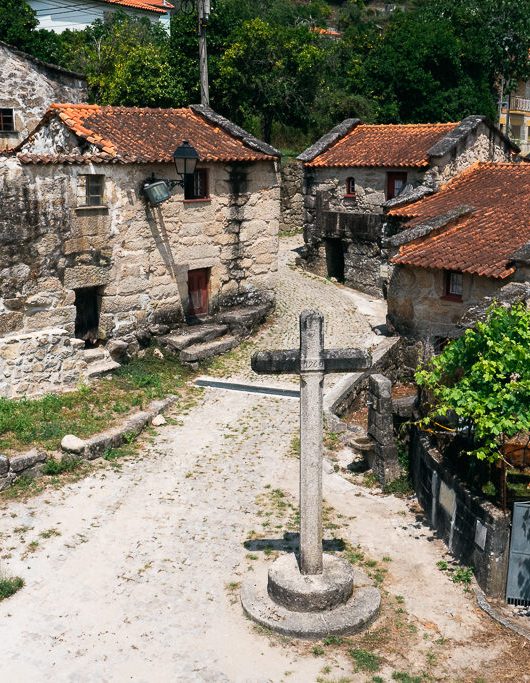
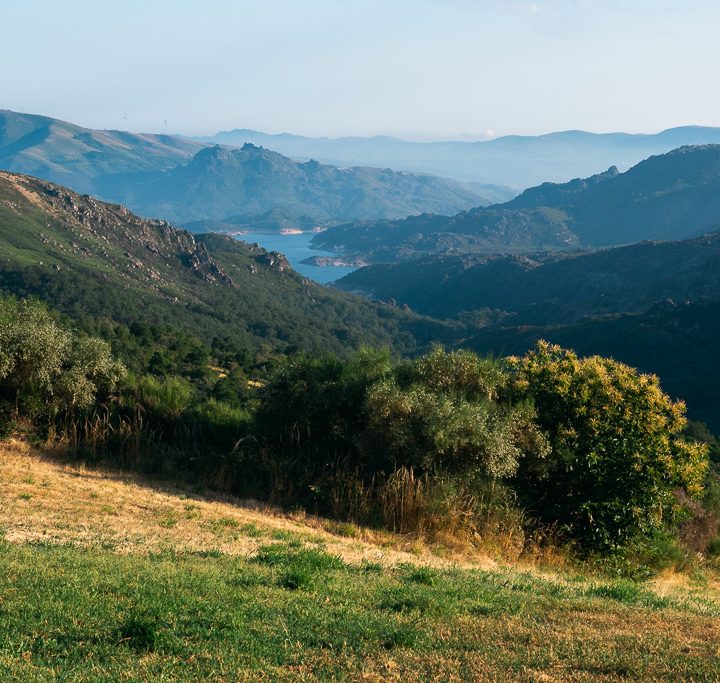
The core of Gerês is a fully protected area that’s mostly inaccessible by road (though it’s open for hiking or trekking). The peripheral areas do have road connections and are home to about 9,000 inhabitants, and it’s here that activities such as small-scale agriculture or tourism can take place.
The Spanish side also has a national park called Reserva da Biosfera Transfronteiriza Gerês-Xurés, though I found the Portuguese side overall the more interesting to explore.
How to travel to Gerês
Renting a car is the best way. Since there is barely any public transportation, Gerês is by far best explored using your own vehicle. You can read my tips for renting a car in Portugal.
A good bet is to rent a car in the city of Braga, which is just an hour’s drive from Gerês. You could also rent a car in the larger city of Porto, from where it’s about a two-hour drive to the heart of Gerês (from Porto it’s about 66 miles or 107 kilometers).
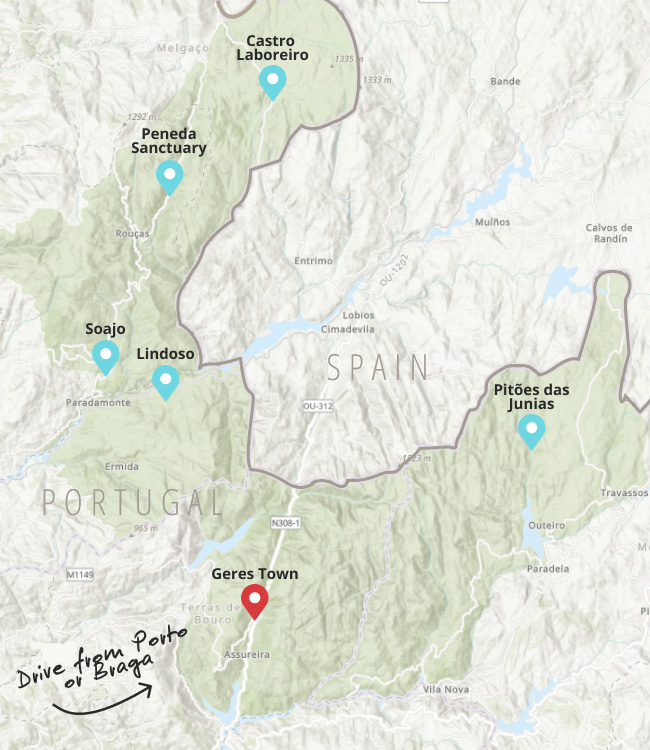
By public transport, you can only really visit Gerês Town. Take the train to Braga and then a local bus to Gerês Town.
From Gerês Town, you can easily book various local tours, such as this 4×4 tour of Gerês or this kayak + waterfall trip. These tours offer a good alternative if self-driving is not an option. Some of them also do pick-ups in Braga or Porto, potentially letting you see several sights in Gerês as a day trip.
Still, it’s best to have your own transportation so that you can be free to go anywhere. You can check Discover Cars for rental car prices. This site scans the well-known brands but also local providers for the best deals available.
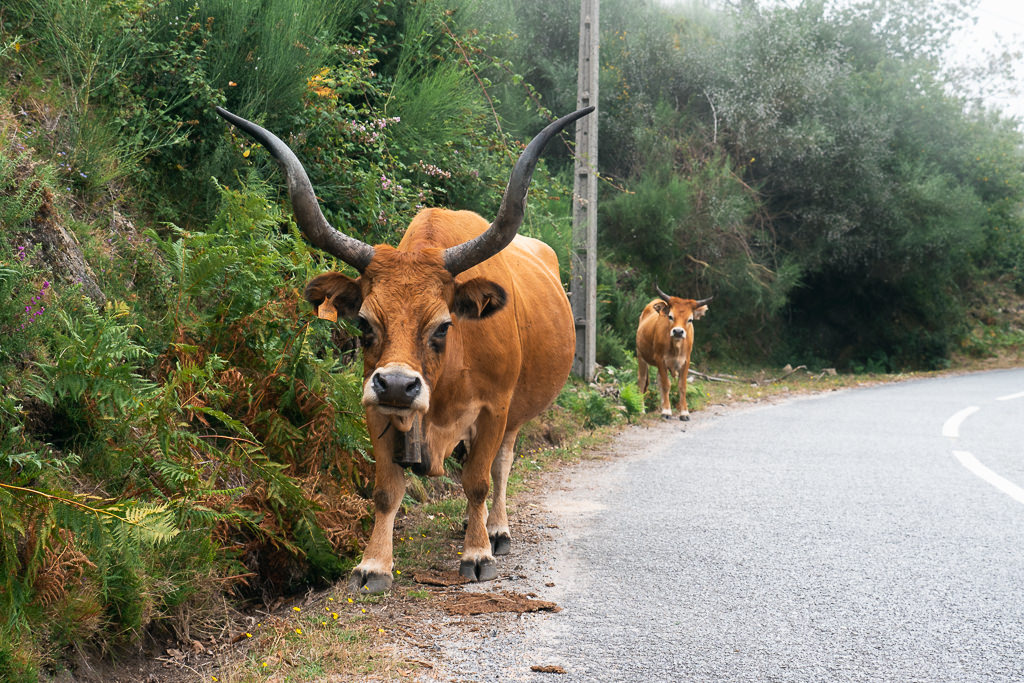
When you’re driving on small roads, watch out for the impressively-horned Cachena or Barrosão cows! They are friendly but sometimes obstruct the way, as they’re left free to roam around some sections of the park.
Villages and sights
Gerês is less about ticking ‘must-see sights’ off the list and more about enjoying nature and visiting small villages.
My road trip through Gerês hence did not follow a set itinerary; I simply marked some places on the map and improvised along the way.
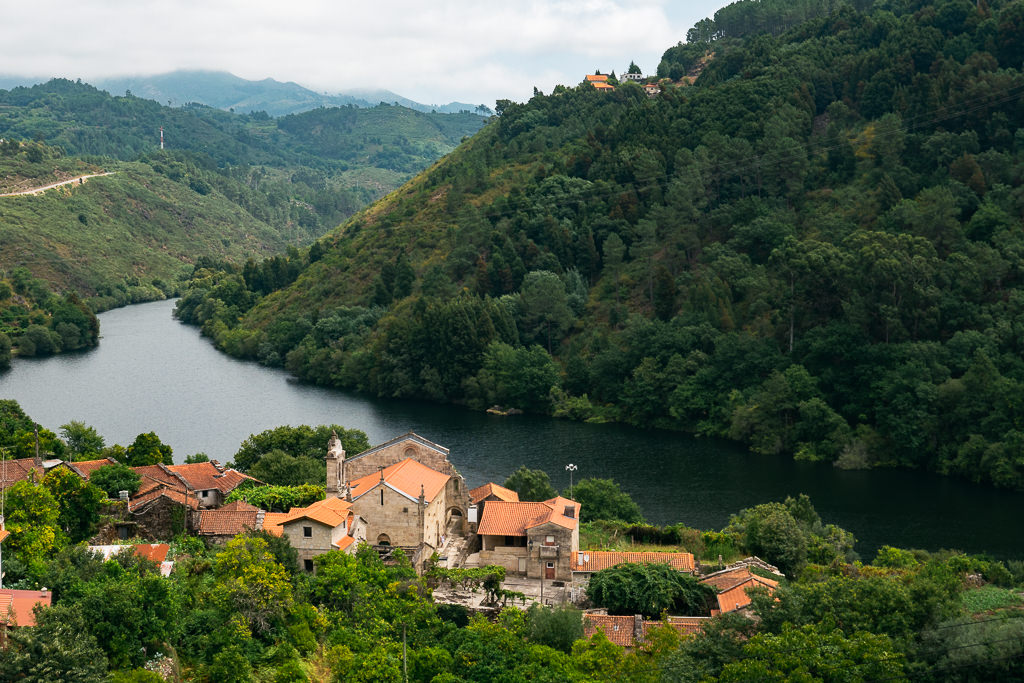
While it has plenty of impressive vistas, exploring Gerês is also about the little things. The local tourism offices have leaflets with plenty of ideas for local things to see or do. You can also get great tips from your accommodation, such as where to find some nice waterfalls or swimming holes near you.
The following are a few of the places we stopped, but I encourage taking a similar approach: marking places as potential waypoints and just seeing where the day takes you.
Pitões das Junias
This village near the border with Spain has a truly remote feel — and, being quite a fan of middle-of-nowhere places, it was my favorite in Gerês.
While it was not our first stop I still mention it first, since it proved to be such a highlight, serving as our base for the eastern part of Gerês.
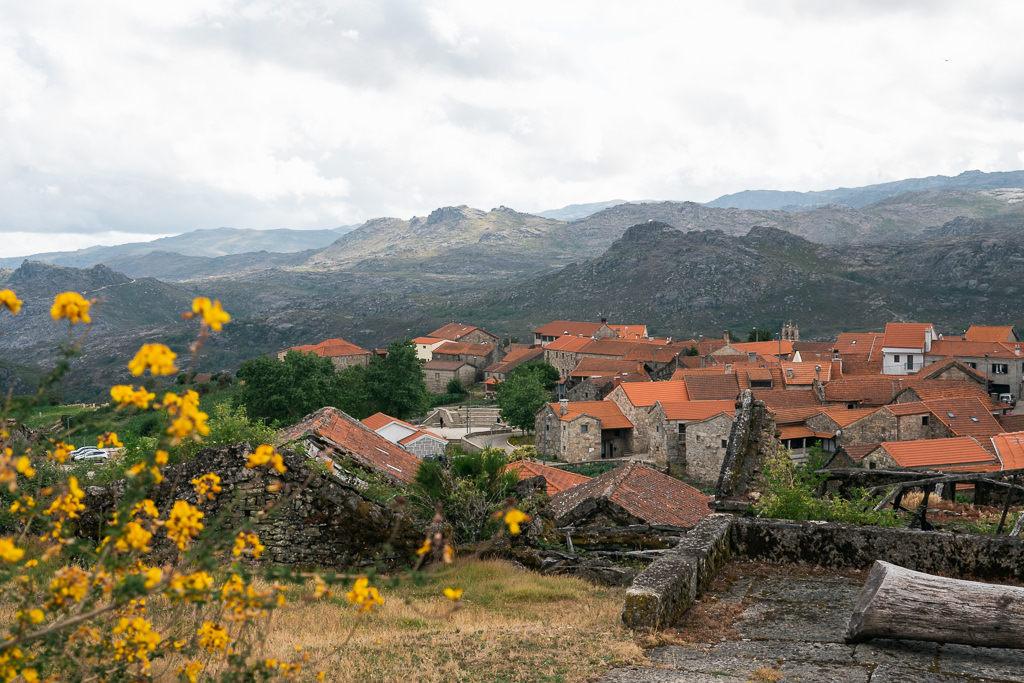
In this remote village, it’s nearly silent among the stone houses — except for some distant moo-s or tingling of goat bells.
In the morning, farmers and shepherds meet for coffee outside the village’s only cafe, while the bakery prepares its traditional wood-fired rye bread (we bought a loaf so fresh it was still steaming from the inside).
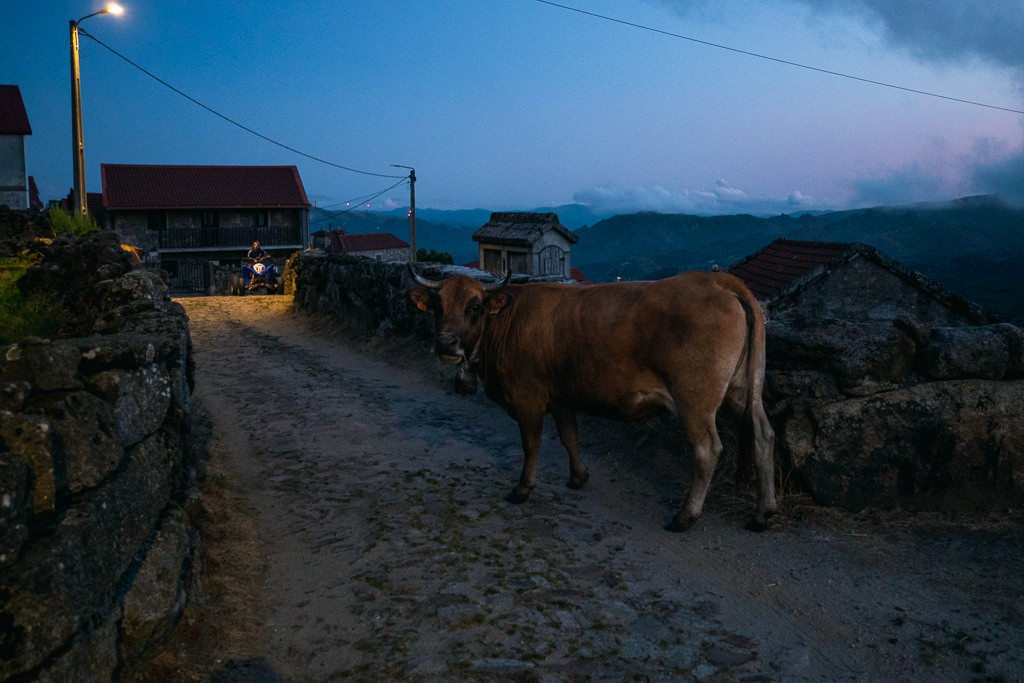
Much of the appeal of Pitões is simply to be in a less-trodden place — that is, apart from the cattle, who will happily trod freely around town.
The cow pictured above was a little unnerved by the red flashing light on my camera, but luckily soon realized we were merely friendly passers-by.
The village has a few small sights nearby. About 2km out of town is a waterfall that has a boardwalk path leading down to a viewing point. There are also the ruins of a small convent.
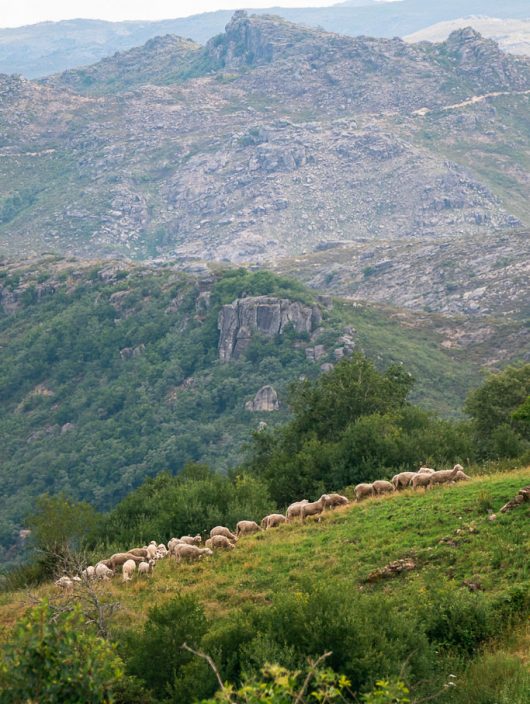
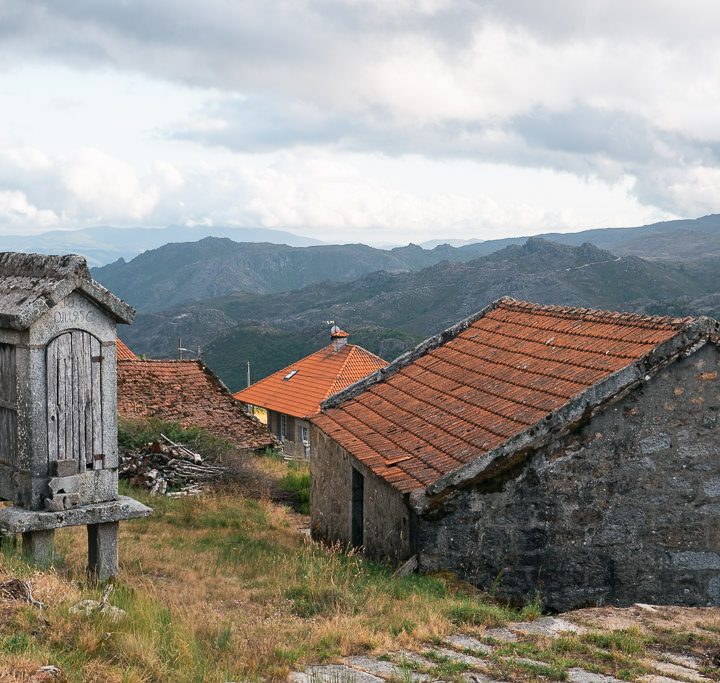
The valley west of town proved to be an absolutely incredible area for an afternoon hike. We followed a sign that said “butterfly forest” and, well, I’m not sure what we were expecting, but there were truly hundreds upon hundreds of butterflies along this path.
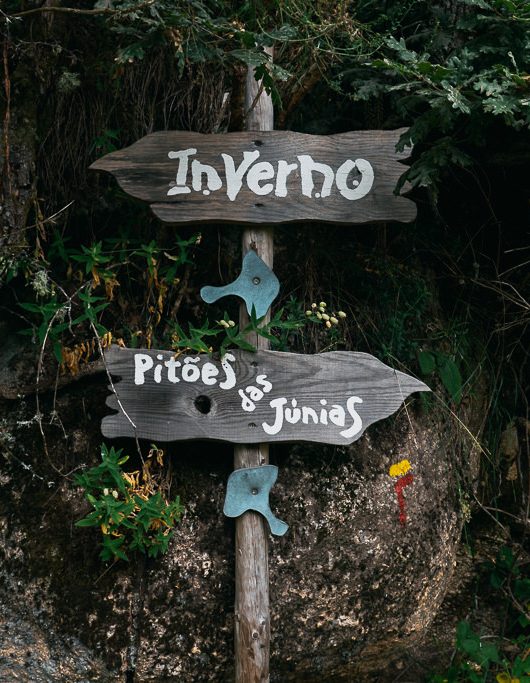
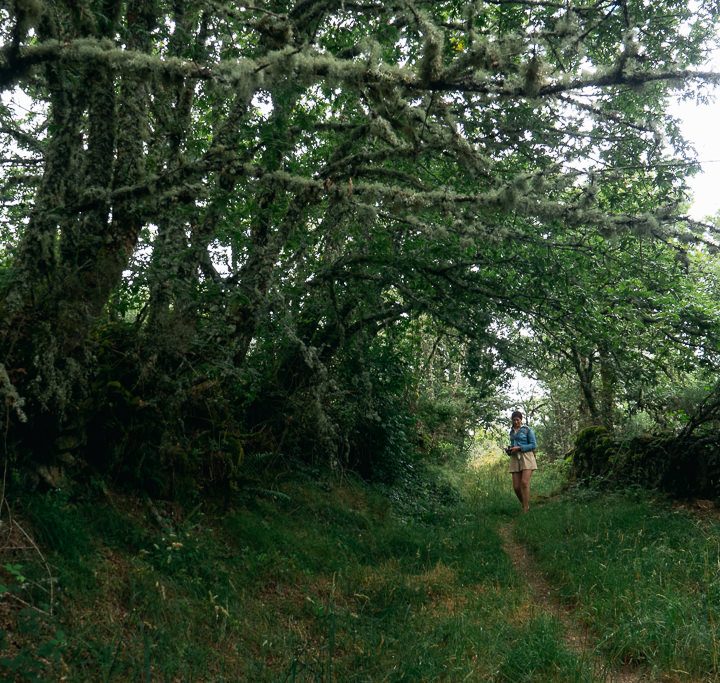
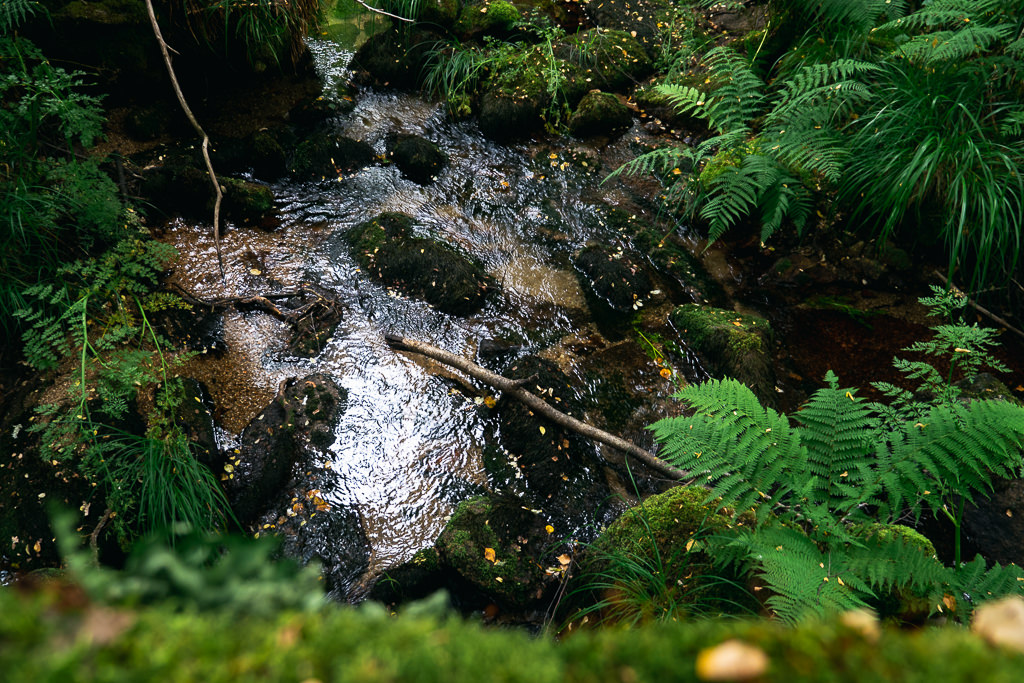
The trail was eventually intersected by a gently babbling creek, then continued uphill to reveal a more open landscape dotted with large granite boulders.
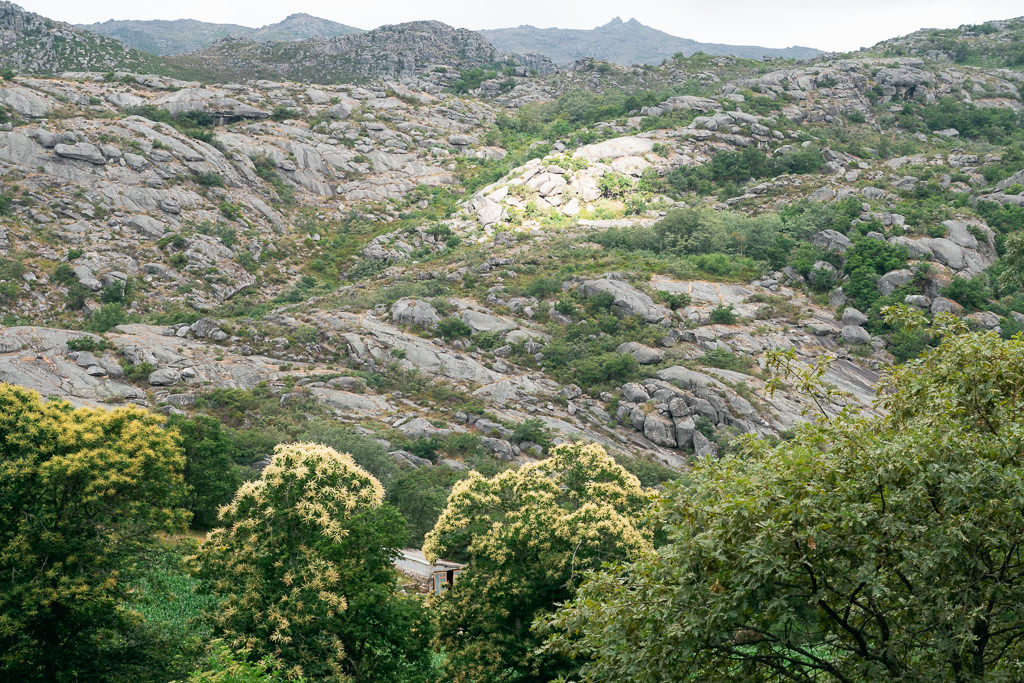
Apart from the butterfly trail, the paths around Pitoes were a bit poorly marked, so we found our own route using the MAPS.me app. This forced us onto some muddy and thoroughly overgrown paths, so you may want to ask a local for the best way around the valley.
It was still worth the slight ordeal as the area around Pitões das Junias was so highly scenic, encompassing stone-walled pastures, oak tree forest, as well as wide-open vistas of the surrounding hills and mountains.
If you want to plan a more ambitious trek then a white mountaintop chapel makes for a great waypoint.
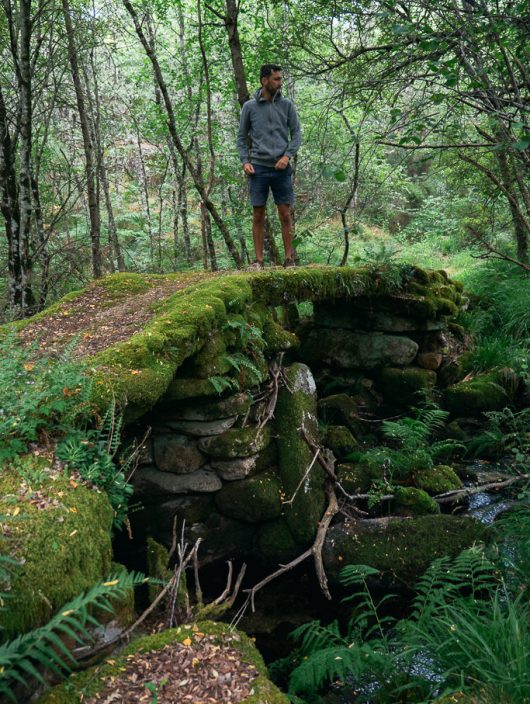
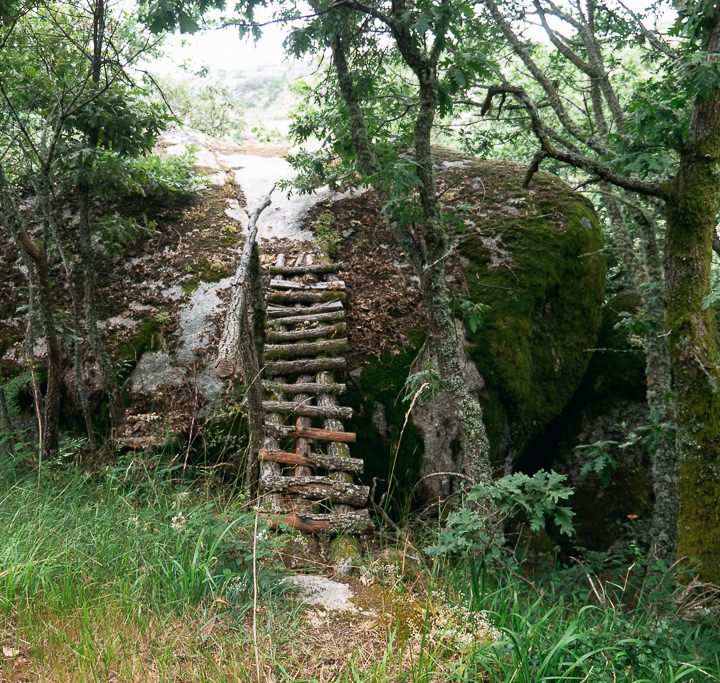
The village has just two restaurants. We enjoyed dining at Restaurant Dom Pedro Pitões, which serves traditional Portuguese dishes. The building once used to be a cattle shed and has a cozy atmosphere.
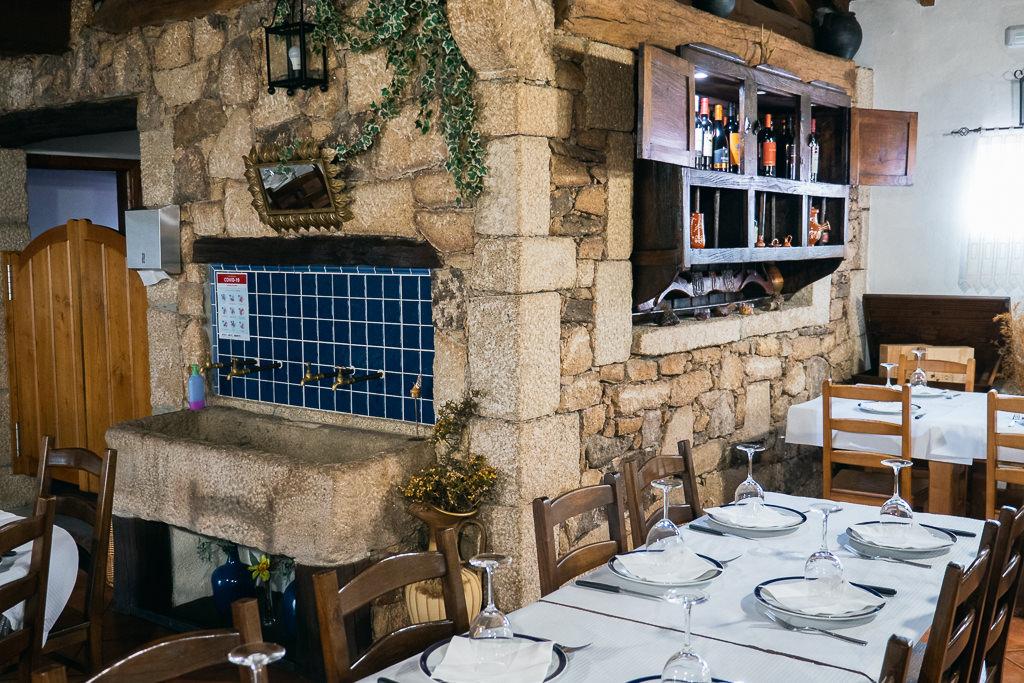
Pitões das Junias is a very gentle and quiet place with not much going on, but that was exactly what we liked about it. It’s somewhat out of the way from the main parts of Gerês but it’s worth driving to if you think you’ll enjoy such an understated place.
Lindoso
This quaint village was our base in the western part of Gerês. It’s one of the ‘Aldeias de Portugal’, a brand recognizing historic Portuguese villages.
The village’s name literally means “beautiful” in Portuguese — and it was, in fact, rather lovely!
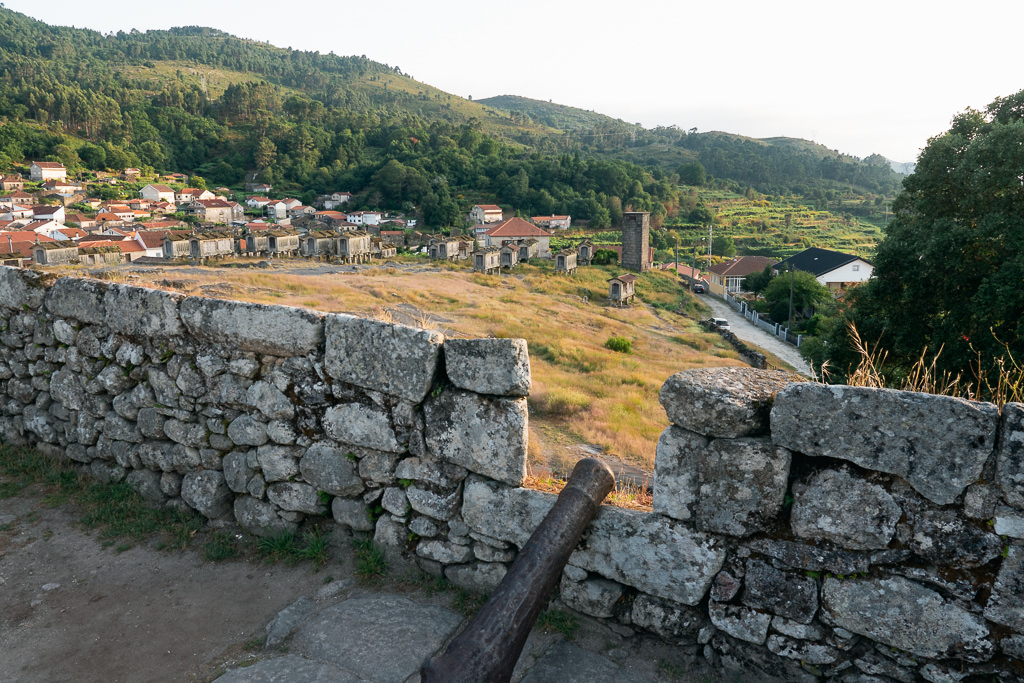
Lindoso has a central mound with small granite structures that once served as grain silos. These so-called espigueiros are common in parts of northern Portugal and Spain, though Lindoso has an especially large number of them (about 50).
It’s also home to a small 13th-century castle with an associated museum.
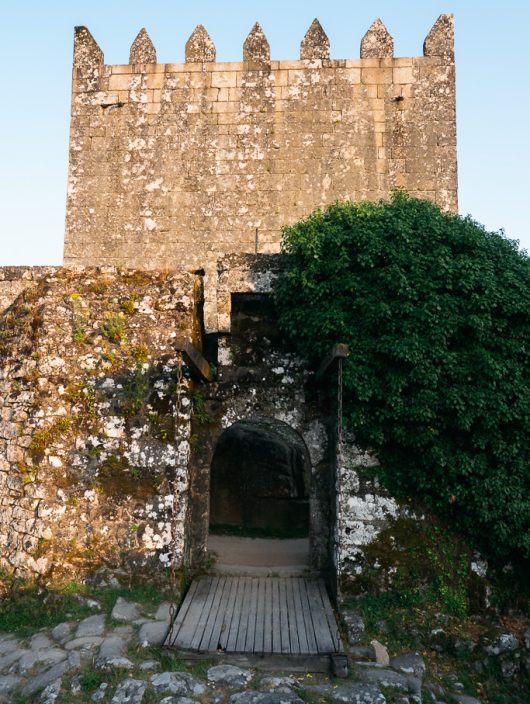
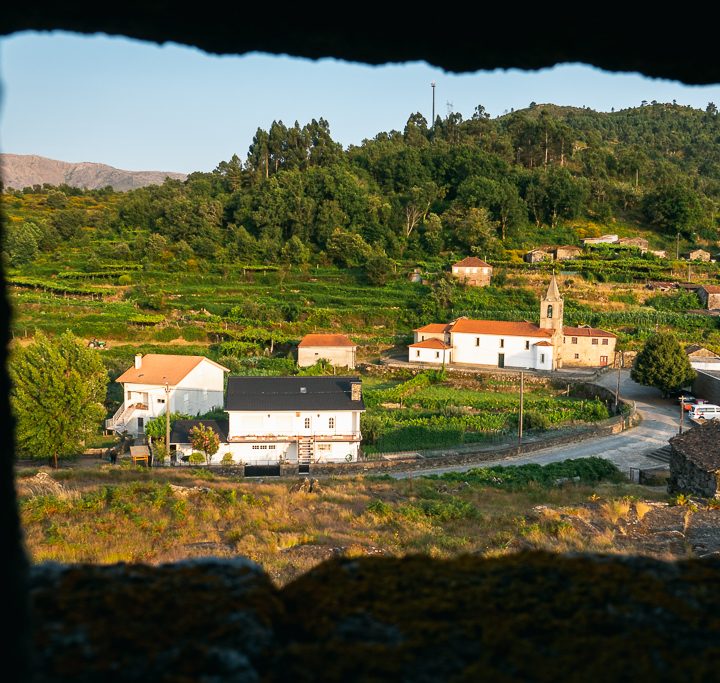
The western side of Gerês has a lot of small sights to see, so staying in or near a village like Lindoso or Soajo will let you explore this area very well.
One of the nicest sights in the west of Gerês is the Sanctuary, and driving to- and around it on small rural roads makes for a fun day’s worth of road tripping.
Santuario de Nossa Senhora da Peneda
This religious sanctuary is an impressive sight with its monumental hilltop church and the long stairways leading up to it. The sanctuary was built in the 18th century and remains a pilgrimage site to this day.
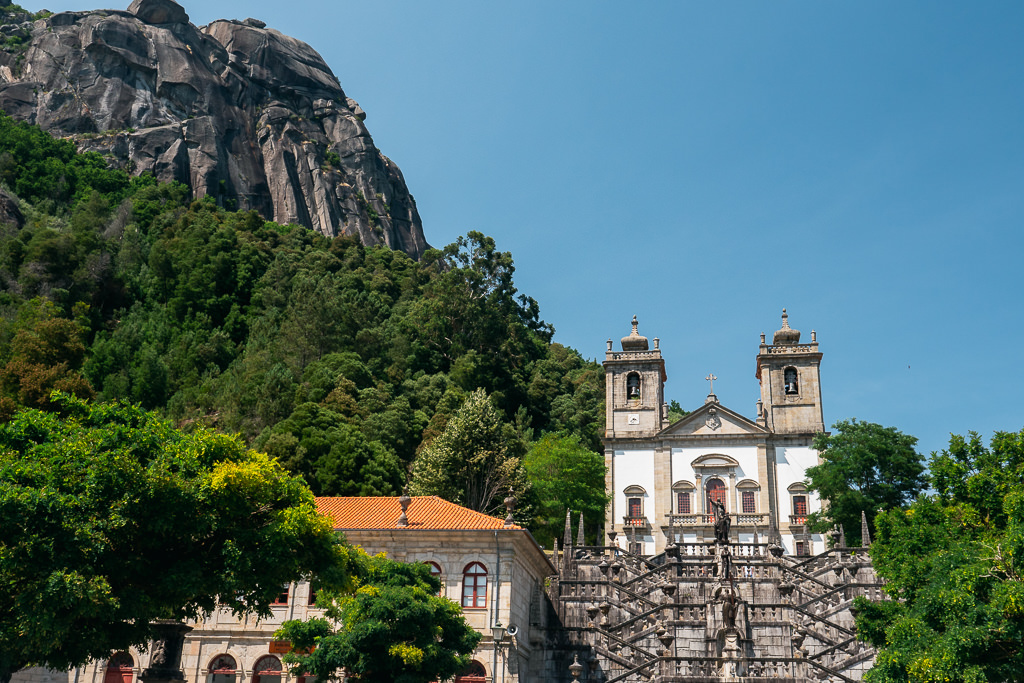
Although it may take no more than an hour or so to explore, the sanctuary grounds are very beautiful and peaceful.
There are some nice walking paths (one is quite steep and goes to Peneda lake) as well as several restaurants with terraces offering a great view of the town. Several shops sell local pottery wares.
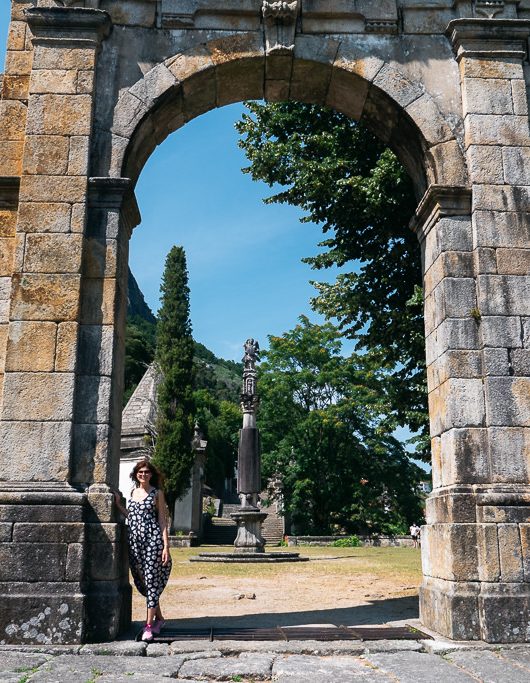
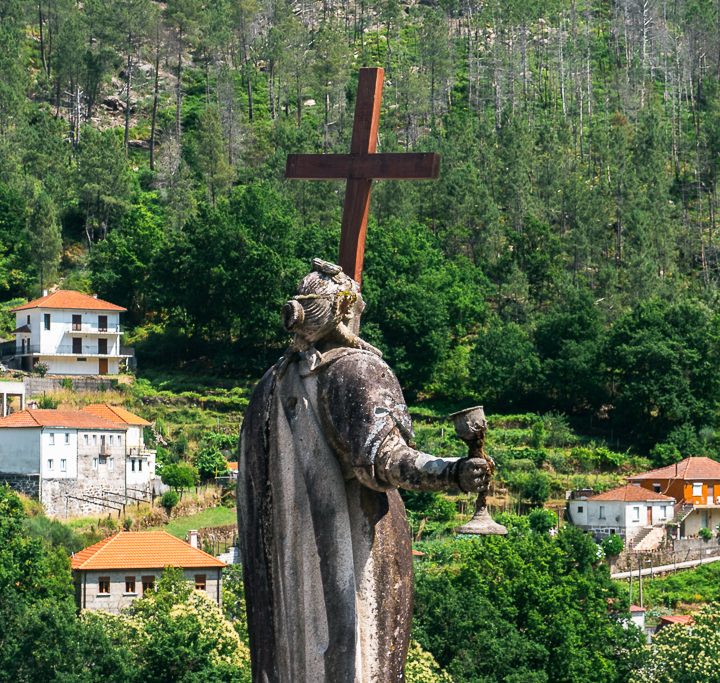
I also very much enjoyed the drive there to the Sanctuary. Away from the major roads, this area has a bit of a wild feel to it. On several occasions, we had to give right of way to crossing Barrosões, a local ancestral cow breed with impressive horns that roam freely in these parts.
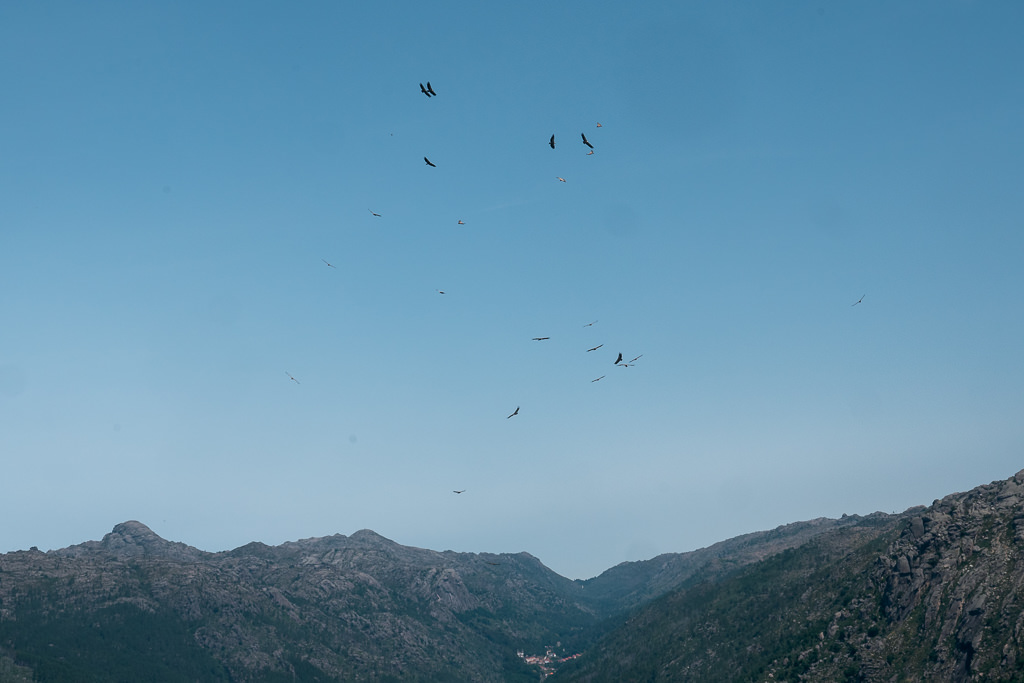
At a viewing point halfway to the Sanctuary, we witnessed a swarm of birds of prey circling above the valley.
Castro Laboreiro
Further north from the sanctuary, Castro Laboreiro is worth visiting for its ruined castle that sits atop the hill watching over the village.
The trail to the castle takes about 45 minutes to hike, from where you’ll be granted wonderful views of the low mountainous landscapes of Gerês.
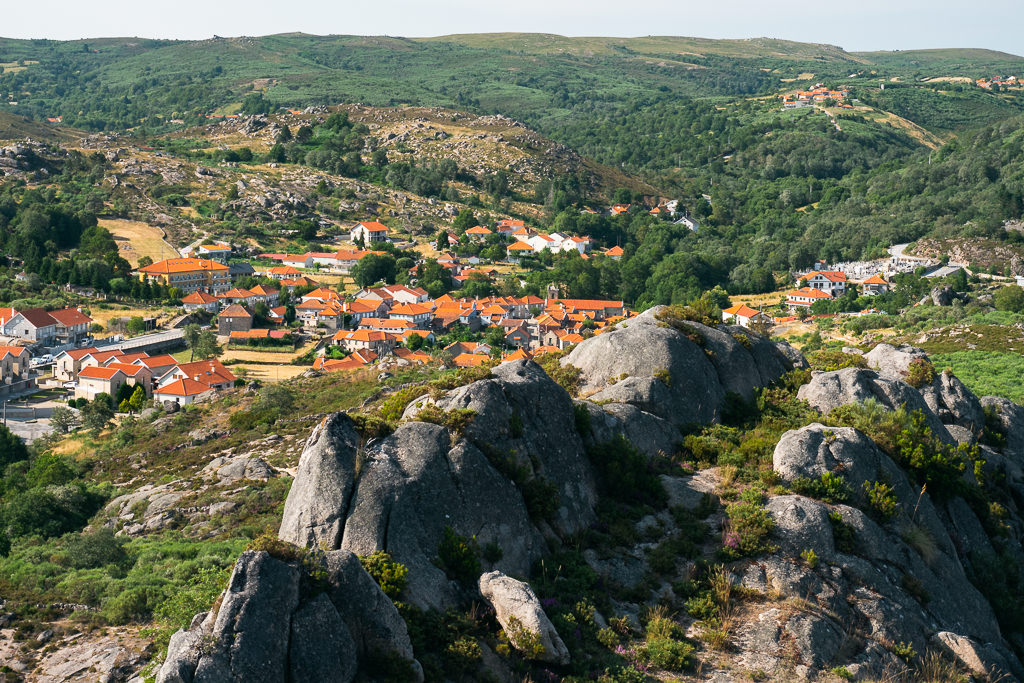
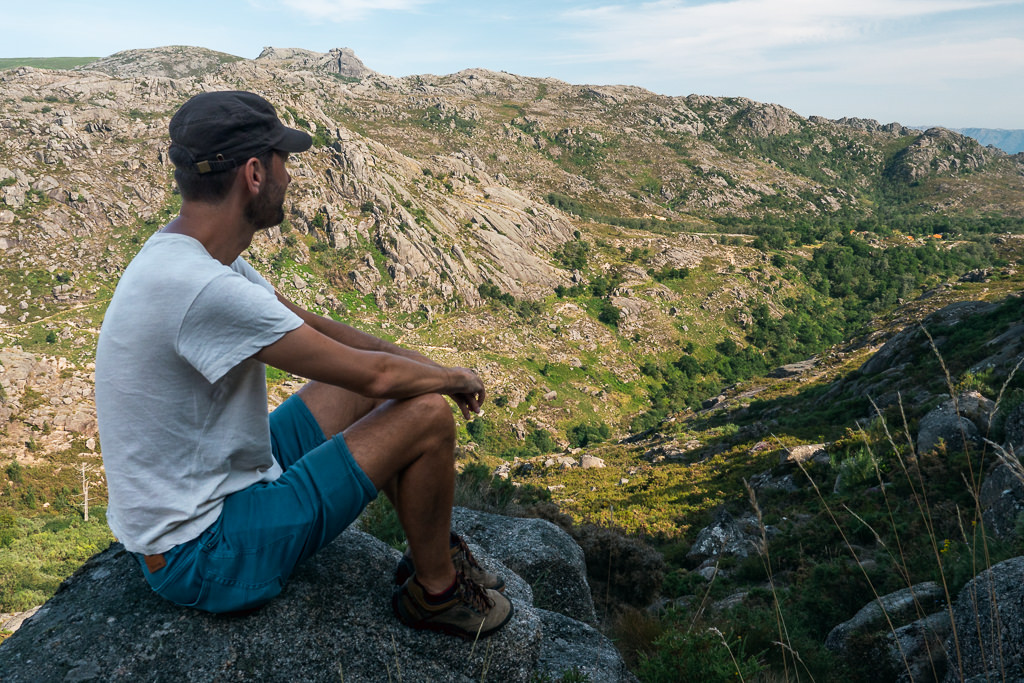
Besides the castle, there are various nature activities around Castro Laboreiro as well, including some tour companies offering canyoning trips. It’s an active and literally off-the-path way to experience the nature reserve, where you clamber through streams and small waterfalls while wearing wetsuits.
While we drove back to our accommodation near Lindoso the same way, you could also continue onwards to the town of Sistelo, which is situated among terraced fields, and drive a circle around the west side of Gerês.
Soajo
Like Lindoso, Soajo also has many espigueiros, or traditional stone grain silos. You can check them out on top of a central mound at the heart of town.
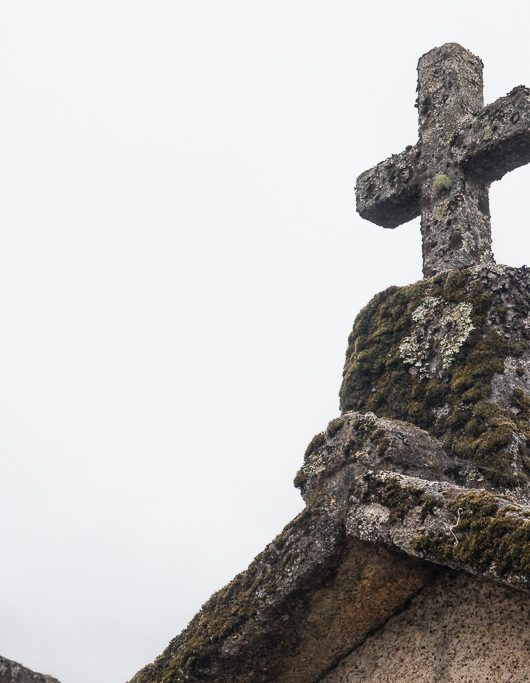
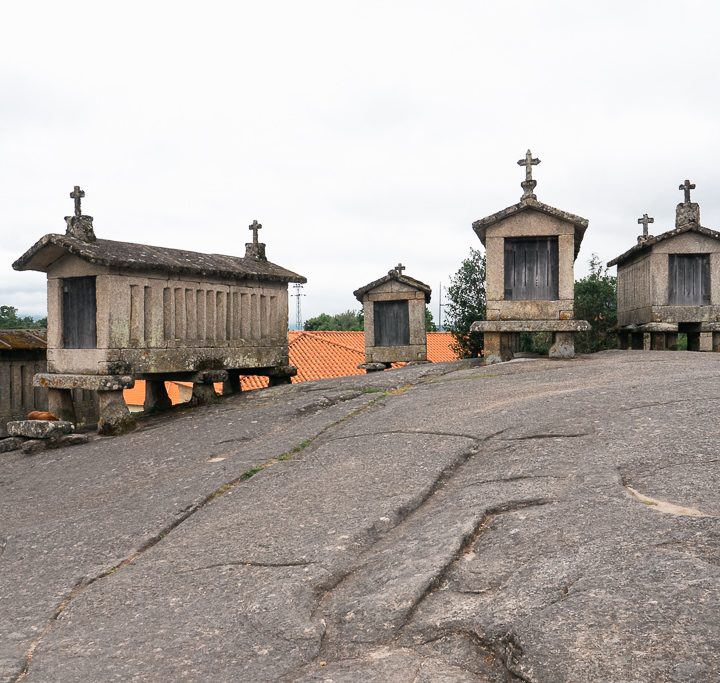
Soajo also had noticeably many dogs milling about. When I saw a small monument dedicated to dogs, I finally understood why: this town happens to be the origin of a special breed of hunting and cattle dog, the Castro Laboreiro. The villagers are evidently big dog lovers to this day!
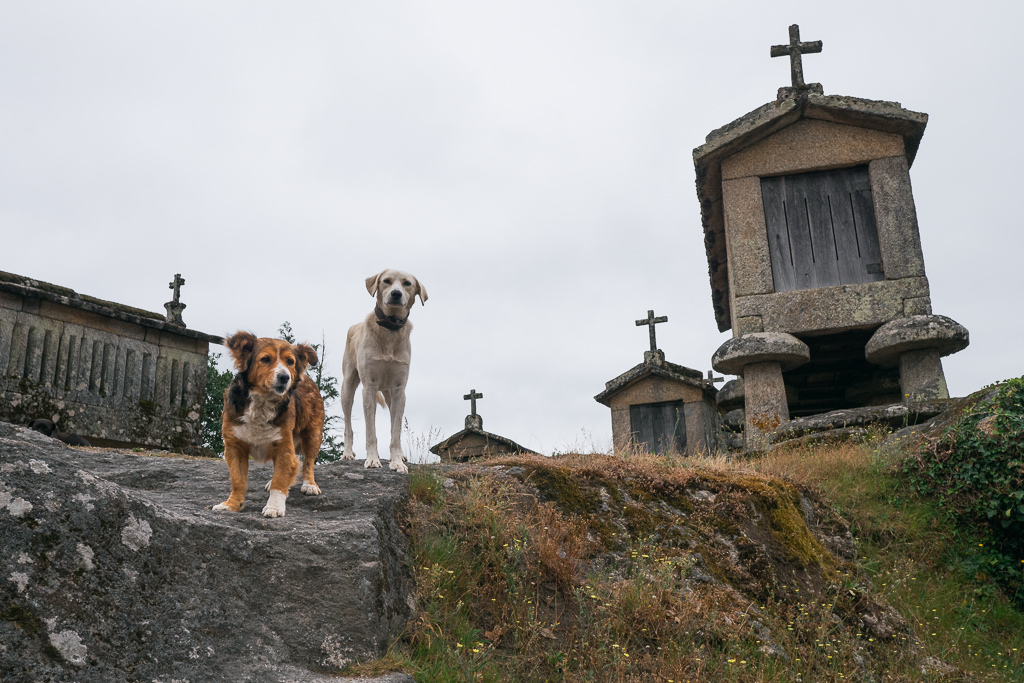
Soajo and Lindoso are just 5 kilometers or so apart, so you can see them on the same trip. Both towns are nice places to stay when exploring the western side of Peneda-Gerês National Park.
‘Tahiti’ waterfall
Known officially as the Fecha de Barjas but known locally as the Tahiti waterfall, this cascade on the southwest side of the park is much more impressive than photos may lead you to believe, simply as it’s hard to capture it all in one image.
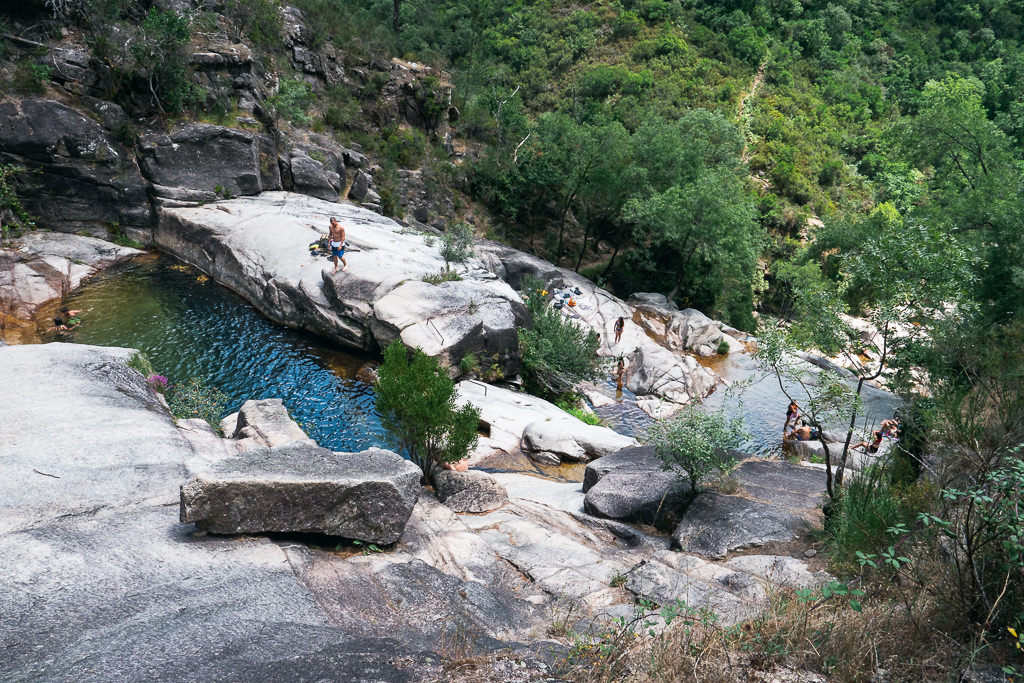
The stream makes several legs down falling over big granite boulders, creating various nooks and pools where you can relax in the sun.
Some of the cliff edges are a bit steep, so you may not want to venture there with small children, but if you don’t mind a mildly adventurous clamber then it’s a very fun spot to check out.
Spooky ruins
We stumbled upon these ruins after crossing into the Spanish side of the Gerês park. It was just something that popped up on MAPS.me and we needed to stop for a picnic break anyway, and it proved to be a fun little location to explore.
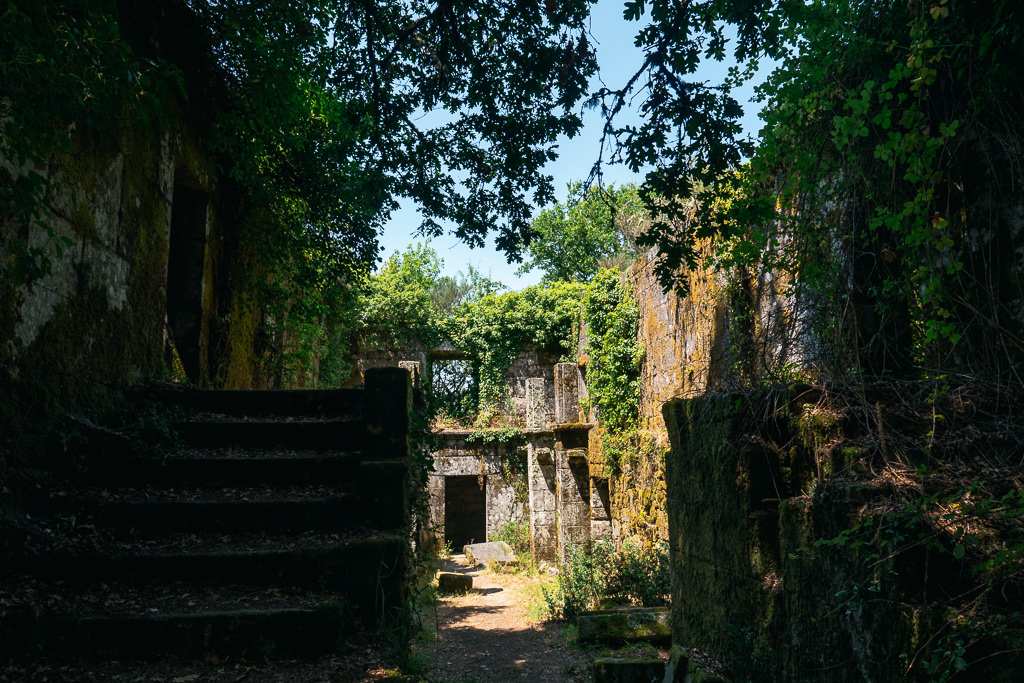
These overgrown and spooky ruins are of an 18th-century manor house once built by a wealthy religious man. If you like clambering around abandoned places then put a pin on your map for A Escusalla in case you’re passing by.
It’s a nice example of the kind of low-key attraction you’ll find a lot of in- and around Gerês.
Ponteira
There is not much to see or do in Ponteira, which is really not a tourist destination. Nevertheless what is remarkable about this small village is the way it’s nestled among mountains of granite boulders.
Seeing this scenic location, we made a stop here on our way back from Pitões das Junias, just to have a little walk around this traditional Portuguese village.
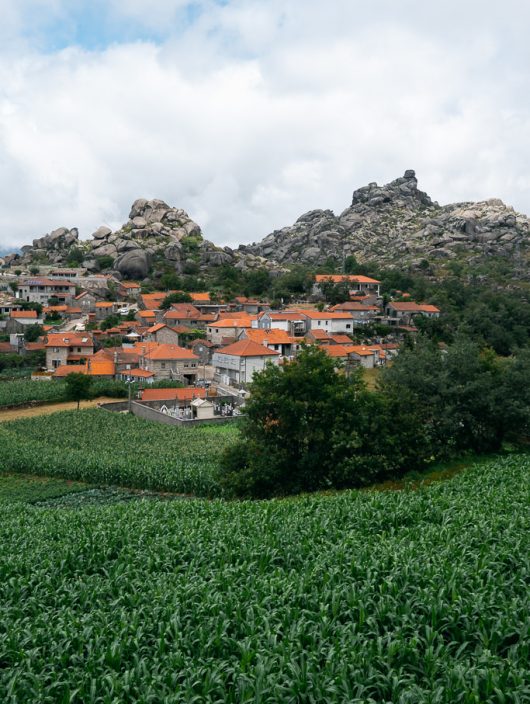
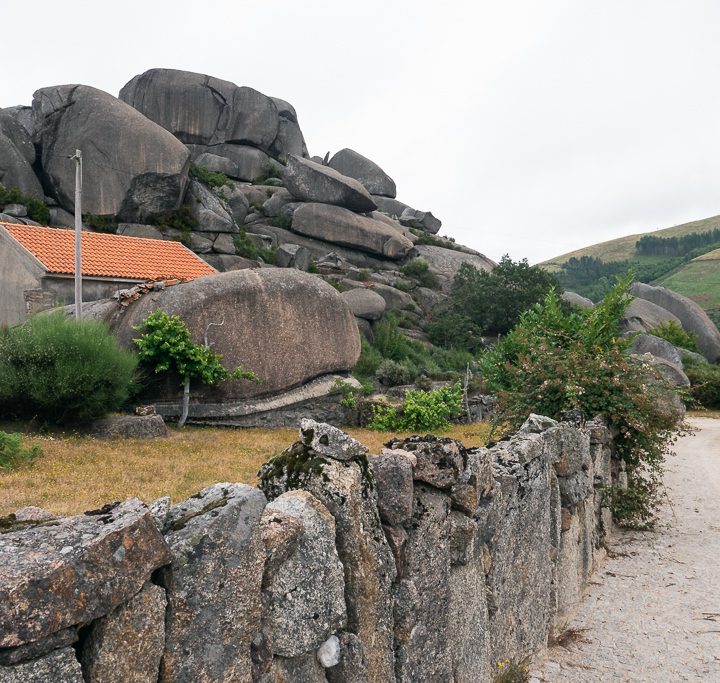
Gerês Town
Gerês Town is a picturesque town that is the easiest jumping-off point for discovering the national park. It’s a minor tourist center and spa resort with some natural hot springs and a handful of hotels.
This town is what most Gerês travel blogs will focus on, but to be honest we only spent a few hours here for lunch and a walk in the Parque das Termas, a small municipal park by the river.
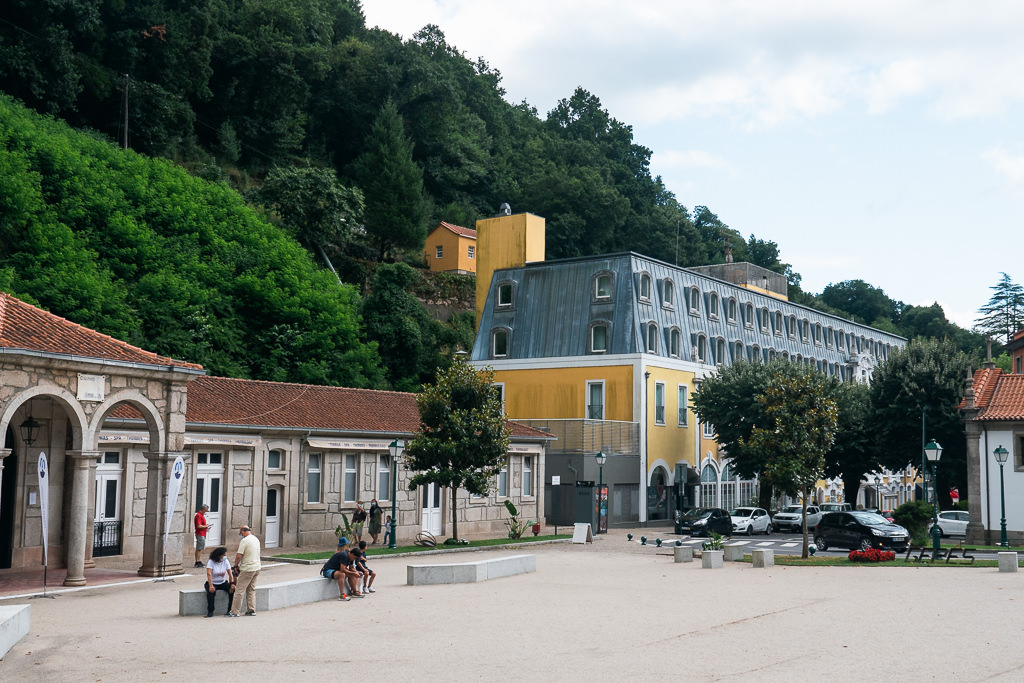
Since Gerês Town is the only place that is easily reached by public transportation, it’s where I recommend going if you don’t have a car. It’s easy to organize trips into the park from here, including 4-wheel drive tours and ATV trips.
Since we were on a road trip, we skipped past it a bit, though it’s definitely a charming place. We picked up a few nice souvenirs and while we were having lunch in Gerês Town, a band of troubadours passed by singing Portuguese songs, which was definitely unexpected.
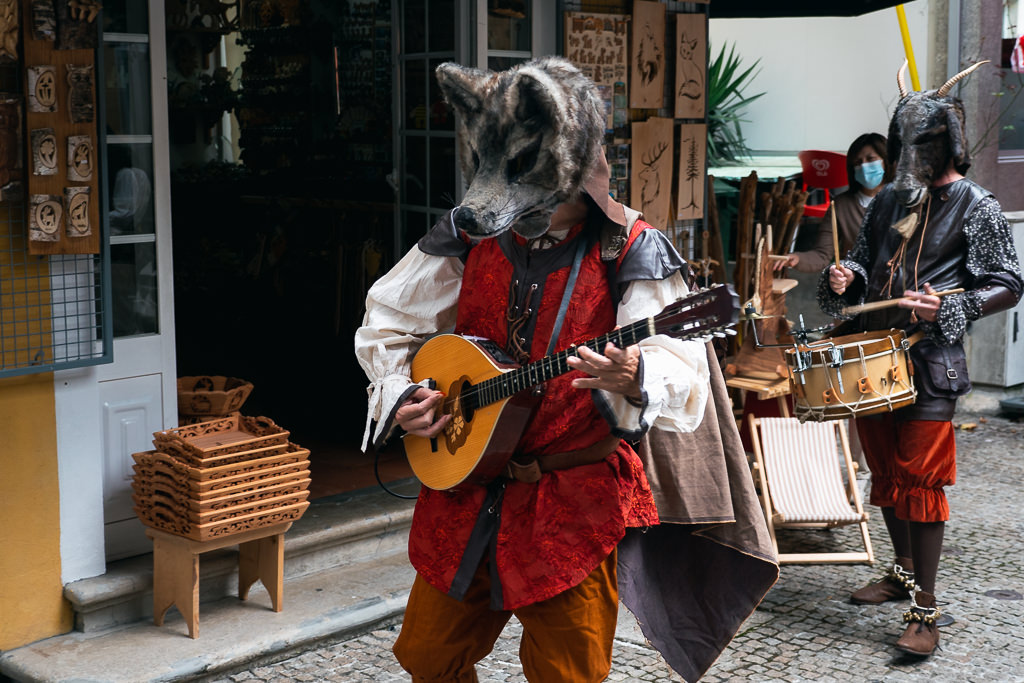
Besides those coming for the spas, digital nomads have also discovered Gerês Town thanks to the popular chain Selina having a hotel just a bit south of town. It has a deck overlooking the lake that forms the southern boundary of Gerês park.
During the summer it’s this lake that provides ample leisure opportunities with various beaches, inflatable bouncy castles, and other watersports available. If that sounds like fun, be sure to check out Water Park Gerês.
If you’re a bit less into exploring and more into relaxing by the water, or perhaps planning a family stay in northern Portugal, then this is surely where you’ll want to be — while still having the option to take an organized tour into the national park.
Arcos de Valdevez
While it’s not technically inside Gerês, the town of Arcos de Valdevez nevertheless made a nice addition to our trip. Being more of a regional town it has more variety in terms of food, with some international restaurants that you won’t find inside the national park.
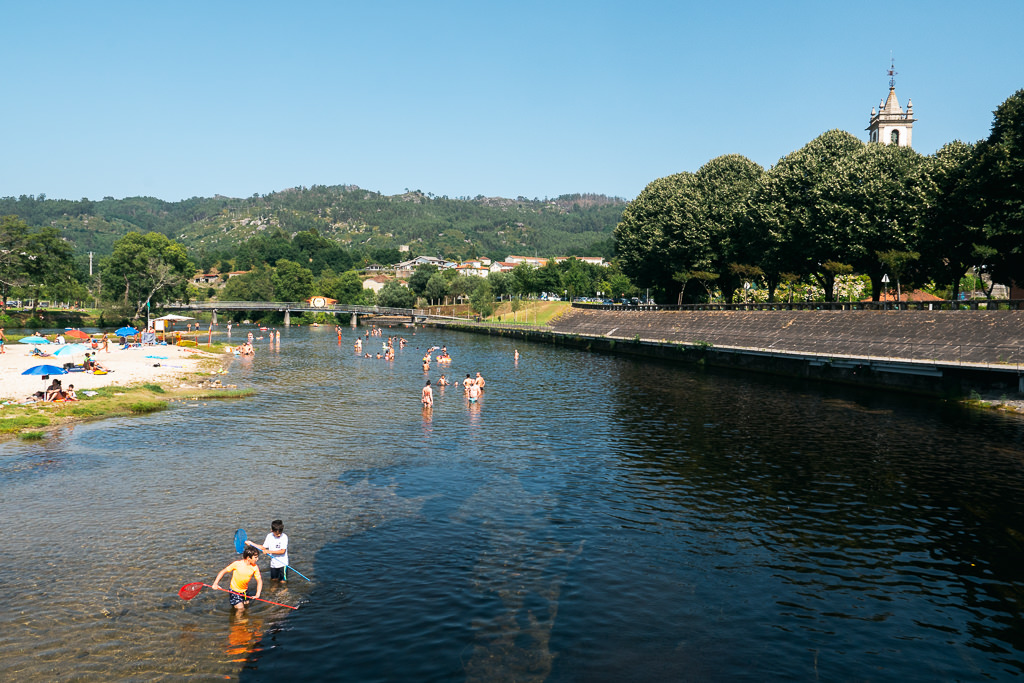
Arcos de Valdevez is also next to a river where you can easily go for a swim in summer. A bit further up the river we went for a bit of river kayaking.
Terras de Bouro
Terras de Bouro is another town a bit outside of Gerês. While the town itself is not so noteworthy in itself, it did offer some fantastic accommodation and so it’s where we ended our road trip.
We stayed a couple of nights at Quinta do Bárrio, a rural accommodation built into a former farm house with a chapel. It has a fantastic infinity pool looking out over the terraced vineyards in the valley below.
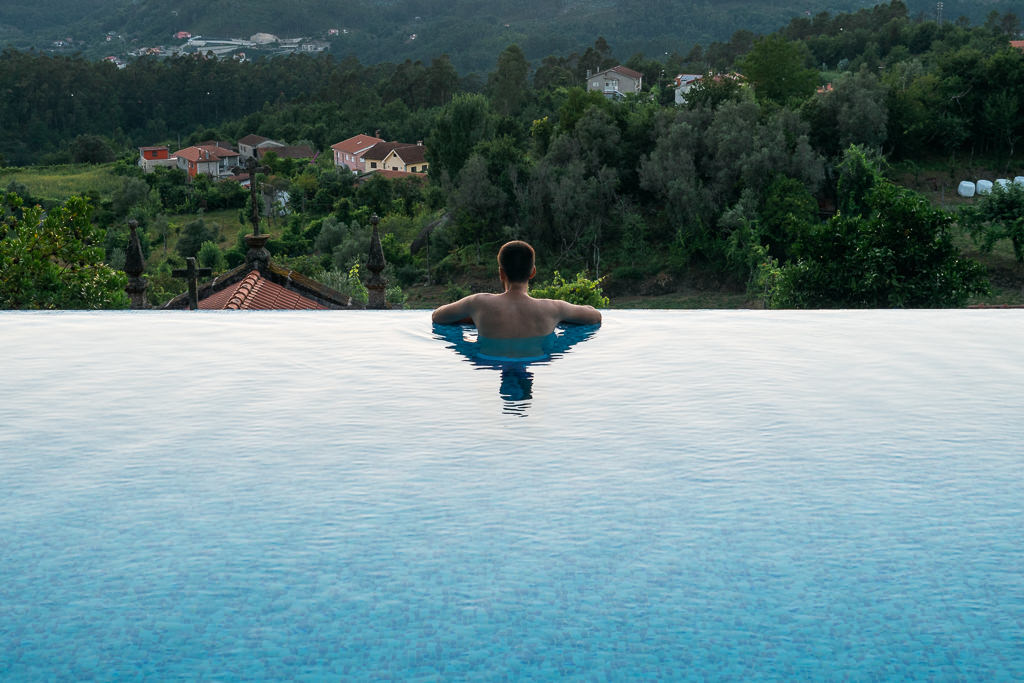
After a lot of exploring, it was great to relax here with some friends and reflect on a wonderful road trip through northern Portugal!
Where to stay in Gerês
Since Gerês is a protected area and tourism is kept under control, you shouldn’t expect a limitless offering of accommodation.
Many B&Bs and hotels are booked months in advance, especially when it comes to the summer months, so booking ahead is highly advised.
Here are a few examples of the types of accommodation you can find:
- These wonderful eco yurts and tipis on the east side of Gerês. Nearby possibility for canoeing, parasailing and cycling.
- This B&B in Geres Town with a great terrace with mountain views.
- A country house in Soajo, an excellent base for exploring the west of Gerês
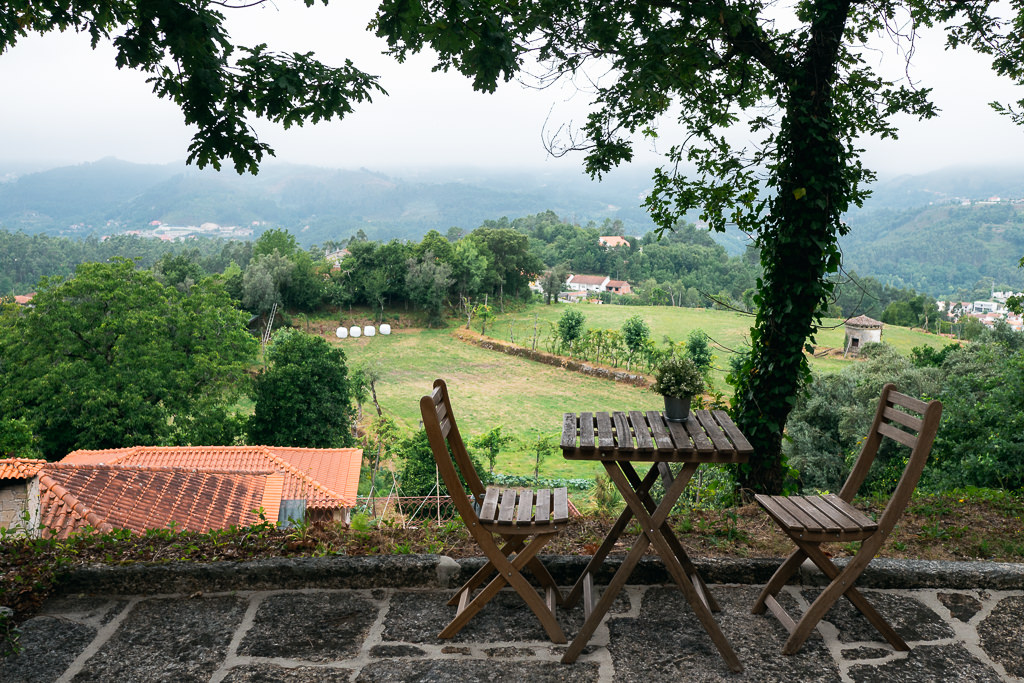
It’s still possible to improvise if you aren’t too picky with your accommodation, but to get the best places it’s certainly better to book. You’ll have the most options if you are by car and have some flexibility to stay anywhere, including in the countryside outside of the villages.
When using Booking.com, I recommend using map view and zooming in on different areas of the region.
If you only search for the keyword ‘Geres’ it will show about two dozen hotels at most, but there are actually many more when you move around the map manually. Booking.com seems to focus on the town named Gerês, not the whole Peneda-Gerês National Park area.
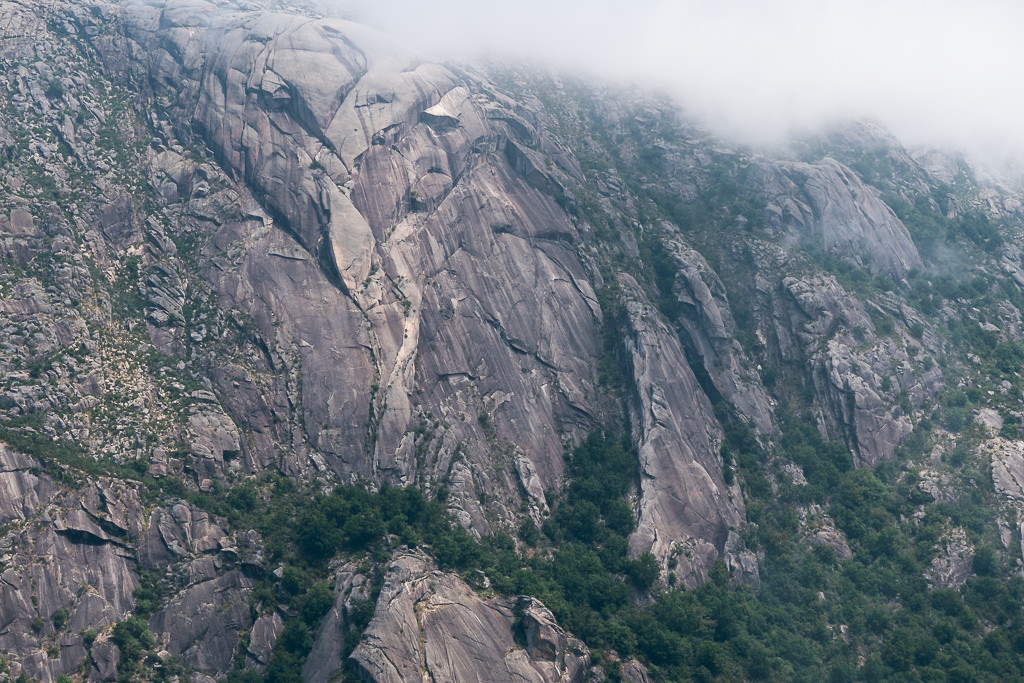
How many days needed
To drive a full circle around the whole of the national park and see plenty of waterfalls, villages, and small castles, I believe having one week is ideal.
However, you can easily spend 2 or 3 days and get a great taste of it too.
As we were being completionists (and being local to Portugal) we spent two weeks around Gerês, though this was taking a very leisurely pace. It gave us time to go on hikes, spend a day just swimming in the river, or take a few detours.
Gerês can be a nice weekend trip, in which case I recommend staying in or near Gerês Town, as this has the best tourist facilities and is the easiest jumping-off point for a shorter excursion.
Some links may be affiliate links, meaning I may earn commission from products or services I recommend. For more, see site policies.
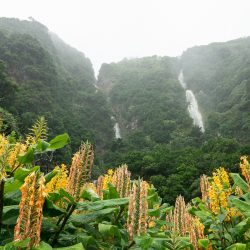
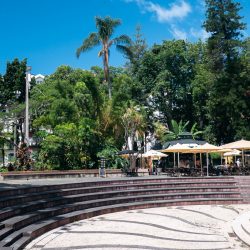




0 comments
Leave a comment
Your email address will not be published. Comments are manually moderated.